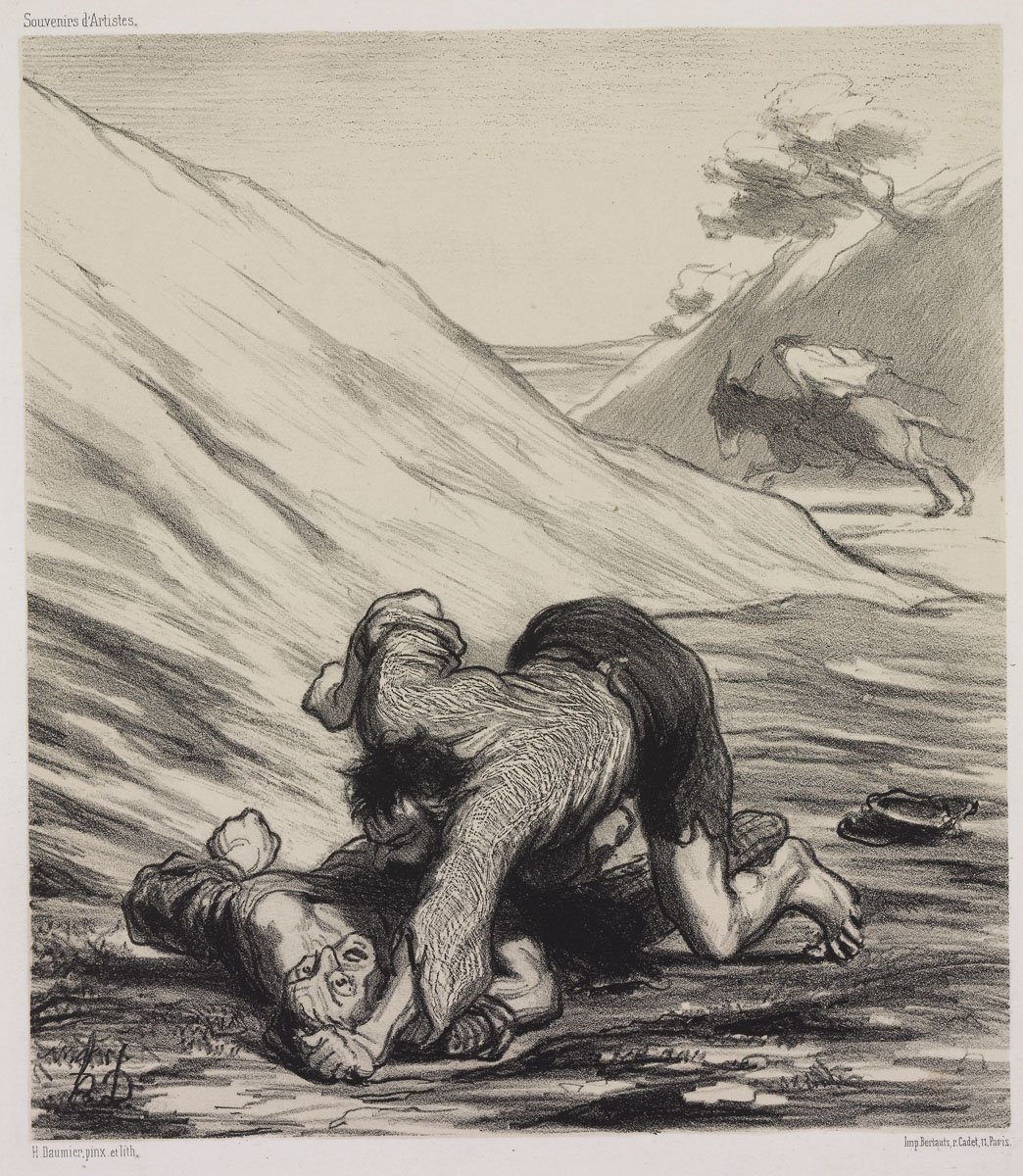
The ass and the two thieves
Prints and Drawings
| Alkotó | |
|---|---|
| Kultúra | Italian |
| Készítés ideje | ca. 1504–1505 |
| Tárgytípus | drawing |
| Anyag, technika | black chalk, red chalk on paper |
| Méret | 191 × 188 mm |
| Leltári szám | 1775 |
| Gyűjtemény | Prints and Drawings |
| Kiállítva | Ez a műtárgy nincs kiállítva |
The magnificent head studies were produced for the ill-fated Battle of Anghiari mural in the Sala del Gran Consiglio (Hall of the Grand Council) of the Palazzo della Signoria (Palazzo Vecchio) in Florence. Leonardo was commissioned to decorate one of the two longer walls of the hall around the middle of 1503. His composition commemorated the decisive military victory in the history of the Florentine Republic, the triumph over the Milanese at Anghiari in 1440. Leonardo worked on the battle scene from October 1503 with interruptions until May 1506, when he returned to Milan, leaving the unfinished work behind once and for all. The last traces of the fresco were obliterated by Giorgio Vasari during his renovation of the hall in 1563.
Although neither the wall painting nor its cartoon (a full-scale drawing used directly for copying the composition onto the wall) have survived, with the help of contemporary accounts, copies and Leonardo’s extant sketches, the destroyed work can be reconstructed. Out of the complete composition Leonardo only painted the crucial episode of the battle, the Fight for the Standard, the moment when the young Florentine captain-general, Pier Giampaolo Orsini, is just about to wrench the standard from the hand of Niccolo Piccinino, the Milanese condottiere. Leonardo created the Budapest sheet as a preliminary study for the full-scale cartoon, and the head in half profile was executed for the Milanese condottiere. The vitality of the drawing results from the use of live models. The dramatic force of expression faithfully recalls the shocking horror of the brutal fighting rage of the soldiers, rushing on each other with unrestrained ferocity in the heat of battle, which Leonardo termed pazzia bestialissima—most bestial madness.
Text: © Zoltán Kárpáti, 2015
A folyó kutatások miatt a műtárgyra vonatkozó információk változhatnak.